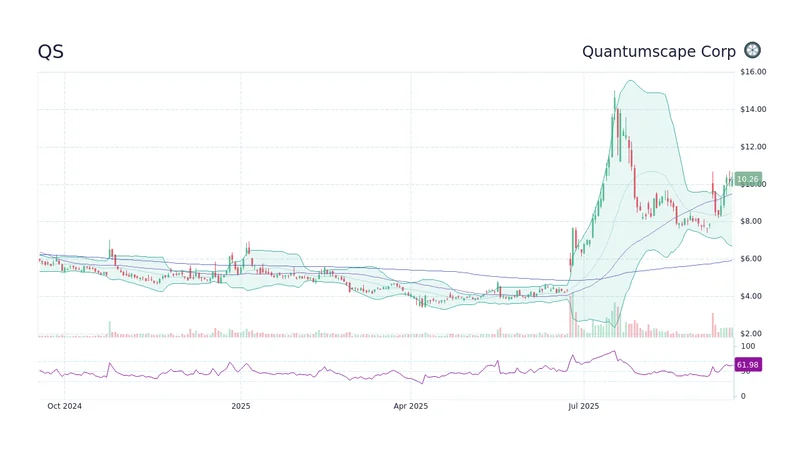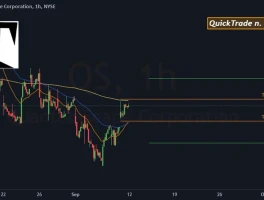The Industrialization of a Dream: Why QuantumScape's Latest Move is Bigger Than You Think
If you’ve been watching the market lately, you’ve probably seen the chaos surrounding the QS stock price. The ticker has been a blur of activity—a surge in trading volume, a massive spike in call options, and a stock chart that looks more like a rocket launch than a financial instrument. It’s easy to get lost in the numbers and dismiss it as just another speculative frenzy. But I’m telling you, what we’re witnessing isn’t just noise. It’s the market, in its own chaotic way, sensing a fundamental shift. We’re watching the transition of an idea from a laboratory white paper into the steel and ceramic reality of our future.
For years, QuantumScape has been the brilliant but reclusive genius in the energy world. Tucked away in their San Jose labs, they’ve been working on the holy grail of energy storage: a commercially viable solid-state lithium-metal battery. Imagine a battery that could charge an EV in 15 minutes, last for hundreds of thousands of miles, and be fundamentally safer than anything on the road today. It sounds like science fiction. And for a long time, that’s exactly what it was—a beautiful, revolutionary theory. When I first read their initial papers, I honestly just sat back in my chair, speechless. The physics was elegant, the promise immense. But the biggest question has always loomed: can you actually build it? At scale?
That question just got a powerful, definitive answer. The recent news that QuantumScape Partners with Corning on EV Battery Separator Tech isn’t just another press release. This is the moment the dream gets its hands dirty. Corning isn't a flashy venture capital firm; they are the 170-year-old masters of materials science. They make the Gorilla Glass on your phone, the optical fiber that connects our world. They are, in short, the people you call when you need to turn an impossible material into a billion real-world products. This partnership is like a brilliant architect who has designed a revolutionary skyscraper finally joining forces with the master builders who know how to mix the concrete and forge the steel.
The core of this collaboration is the ceramic separator—in simpler terms, it’s the magic ingredient, the paper-thin, solid barrier that allows QuantumScape’s battery to do things no other battery can. It’s what makes the entire technology work. And now, Corning is stepping in to help manufacture it at high volume. This is the bridge from the pristine, controlled quiet of the lab to the roaring, relentless hum of a factory floor. This is the industrialization of a dream.

Decoding the Signal From the Noise
Naturally, Wall Street seems a little confused. You have this explosion in the QS stock price, a year-to-date gain of over 139%, and a technical sentiment that’s screaming “Buy.” Then you look at the analyst reports. A consensus rating of "Reduce." A P/E ratio that’s deep in the negative because, of course, they aren't yet selling a mass-market product. This is the classic disconnect between spreadsheet analysis and visionary foresight. The analysts are measuring the company that exists today; the market is betting on the company that is about to be born. They see the caterpillar; investors are starting to see the wings.
What do you make of this chasm between the numbers and the narrative? You have to ask a different set of questions. Why are sophisticated hedge funds like UBS and JPMorgan Chase suddenly increasing their positions by 456% and 1,005%, respectively? Why are options traders making such enormous bullish bets? It’s because the Corning deal wasn't just a milestone; it was a de-risking event of monumental proportions. The technological risk is being steadily replaced by manufacturing execution, and that is a game that industrial titans know how to win.
This shift is fueling the kind of speculative buzz that only surrounds truly transformative technologies. You hear the whispers about Tesla stock and a potential partnership. While nothing is confirmed, the very existence of these rumors tells you everything you need to know about the perceived potential. When your technology is so groundbreaking that people can’t help but connect it to the most disruptive automaker on the planet, you’re no longer just a science experiment. You’re a contender. We are watching this incredible confluence of retail excitement, institutional investment, and tangible engineering progress creating a feedback loop of momentum that is becoming harder and harder to ignore.
This feels like the early days of the transistor. When Bell Labs first unveiled it, most people saw a quirky, unreliable replacement for vacuum tubes. Only a handful of people understood they were looking at the seed of the entire digital age—of everything from the iPhone to the supercomputers running NVIDIA stock today. That’s the scale of what we’re talking about. A breakthrough in energy storage isn't just about better cars. It’s about a more stable grid, decentralized power, and unlocking the full potential of renewable energy. It’s a paradigm shift. And with any great shift comes a responsibility to ensure this power is wielded for the betterment of society, not just for profit.
The Blueprint Becomes a Bridge
For a decade, QuantumScape held a blueprint for a better future. It was detailed, brilliant, and peer-reviewed, but it was still just a piece of paper. The partnership with Corning is the moment they started building the bridge from that blueprint to our world. It’s the sound of the first rivet being driven home, the first steel beam being locked into place. The market isn't just reacting to hype; it's reacting to the tangible, unmistakable sound of progress. The starting gun for the next energy revolution has just been fired, and for the first time, we can clearly see the finish line.

